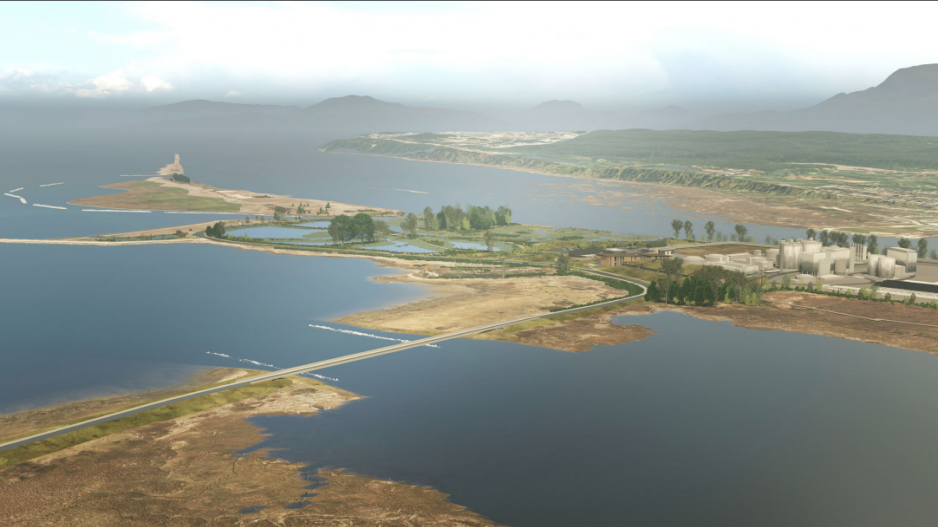Metro Vancouver is facing a challenge as it looks to upgrade and invest in critical infrastructure.
High levels of immigration and population growth in the region means greater need for – and more strain on – water, sewer, transportation, housing and other infrastructure.
“Growth has been a major challenge for us over the past decade,” said Jerry Dobrovolny, chief administrative officer of Metro Vancouver.
“Immigration is our largest driver overall, in terms of our growth, both international as well as interprovincial migration,” he said, adding that aging infrastructure and the resilience of existing infrastruture are also key challenges.
Ottawa anticipates welcoming 465,000 new permanent residents to sa国际传媒 in 2023, in addition to 485,000 newcomers in 2024 and 500,000 in 2025, according to federal immigration targets. In 2021, sa国际传媒’s net migration reached 100,797 people – the highest annual total since 1961, according to the provincial government. Two-thirds of that total came from abroad.
The province of sa国际传媒 absorbs, on average, roughly 20 per cent of new full-time residents to sa国际传媒 each year, according to MOSAIC, a settlement non-profit organization for newcomers.
“The water and sewer infrastructure that we have, which is tens or hundreds of billions of dollars, is critical for the delivery of uninterrupted supply of water and sewer, for all 2.8 million [Metro Vancouver] residents,” Dobrovolny said.
Inflationary pressures and the skilled labour shortage, in addition to population growth, is weighing on the region’s ability to deliver adequate infrastructure, said Gurjit Sangha, vice-president of water and wastewater at WSP sa国际传媒 Inc. Last year, sa国际传媒 welcomed roughly 83,000 new immigrants, each needing housing and the municipal infrastruture that supports it.
“We’re hopeful that some of the immigration needs will assist in helping with the skilled labour shortage. But we also recognize that there’s a need for development to accommodate that growth,” Sangha said.
At Metro Vancouver, 58 per cent of all capital projects in water are driven by growth, with 40 per cent of capital projects dedicated to work in liquid waste. This accounts for billions of dollars, Dobrovolny said.
The Iona Island Treatment Plant, which recently received $250 million in funding from the provincial government for upgrades, is one of the last remaining facilities in the region that requires updates in order to meet the federal wastewater effluent regulations, according to the sa国际传媒 government.
The City of Vancouver has also been strained when it comes to accommodating growth, said Lon LaClaire, general manager of engineering services with the City of Vancouver.
“We’re challenged by ongoing growth in our community, in terms of population and employment, the aging infrastructure and renewal requirements, and then the new challenges around climate change,” he said.
The most fragile – and expensive – part of Vancouver’s infrastructure system is the city’s combined stormwater and sewage pipes, said LaClaire. He described the pipes as medium to very large in size, and said efforts to make them bigger to accommodate growth would come “at a huge cost.”
The key issue is the combined system, he said. Many of the newer municipalities in the region, such as Surrey and Coquitlam, have created separate systems or are able to channel rain and stormwater into natural watercourses.
“In Vancouver, we’ve pretty much eliminated all the streams and creeks. So they’re all kind of technically in a pipe and so in many respects, we’re recreating a lot of those natural systems to help manage stormwater, rainfall intensity,” LaClaire said, adding that an example of this is a retention pond in Olympic Village that contains only rainwater.
Another avenue that offers the potential to improve the city’s water and sewage infrastructure is redevelopment, he said. As more areas, like the Broadway Corridor, undergo upgrades, new systems can be implemented to provide relief for the system.
“With each of these projects, as a redevelopment opportunity, we can look at things like green roofs, or the on site reuse of rainwater for irrigation. Some buildings use it for flushing toilets and things like that,” LaClaire said.
The 10.5-acre, Nch’kay West Senakw development in Vancouver has the ability to dispose of rainwater in the ocean, said LaClaire – an example of utilizing geography. In addition, it provides a snapshot into what is needed to accommodate more housing, said Andy Yan, director of Simon Fraser University’s City Program.
“Senakw is actually a really good example of raw lands that need this type of infrastructure from the ground up,” he said. “It begins with water and sewer, wastewater, then transportation and then things like electricity. It’s actually pretty fundamental things that people forget. The thing is, if it works well, you generally forget about it.”
Dobrovolny echoed this, saying that infrastructure and its importance isn’t something that is “obvious to the public.” In the case of wastewater and sewage, it’s out of sight, said Sangha.
“Those utilities don’t tend to get as much press and coverage because they’re just not seen or really noticed by the public, but they are equally as important,” he said.
